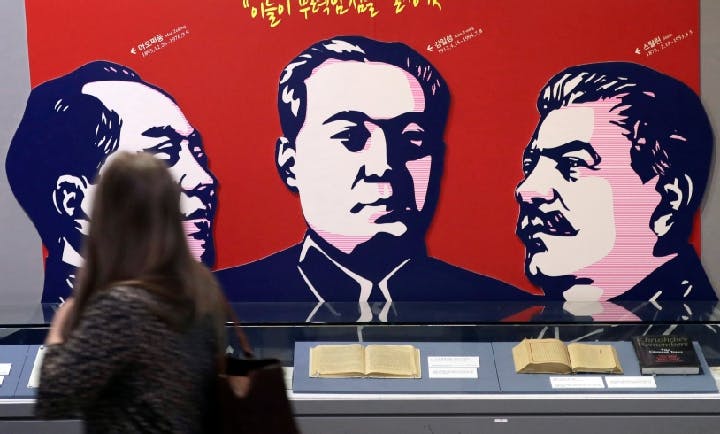Summer 2020
Korean War: Myths and Misconceptions
– Samuel F. Wells, Jr., Robert S. Litwak, Donggil Kim, and Youngjun Kim
Scholars assess what we still get wrong about the so-called “Forgotten War.”
It is now seventy years on from the commencement of the formal hostilities we know as the Korean War. But there is still plenty we get wrong about the conflict, the people who fought in it, and its continuing legacy.
For our Summer 2020 issue, “Korea: 70 Years On,” we asked four distinguished scholars what they see as the biggest myths and misconceptions about the war.
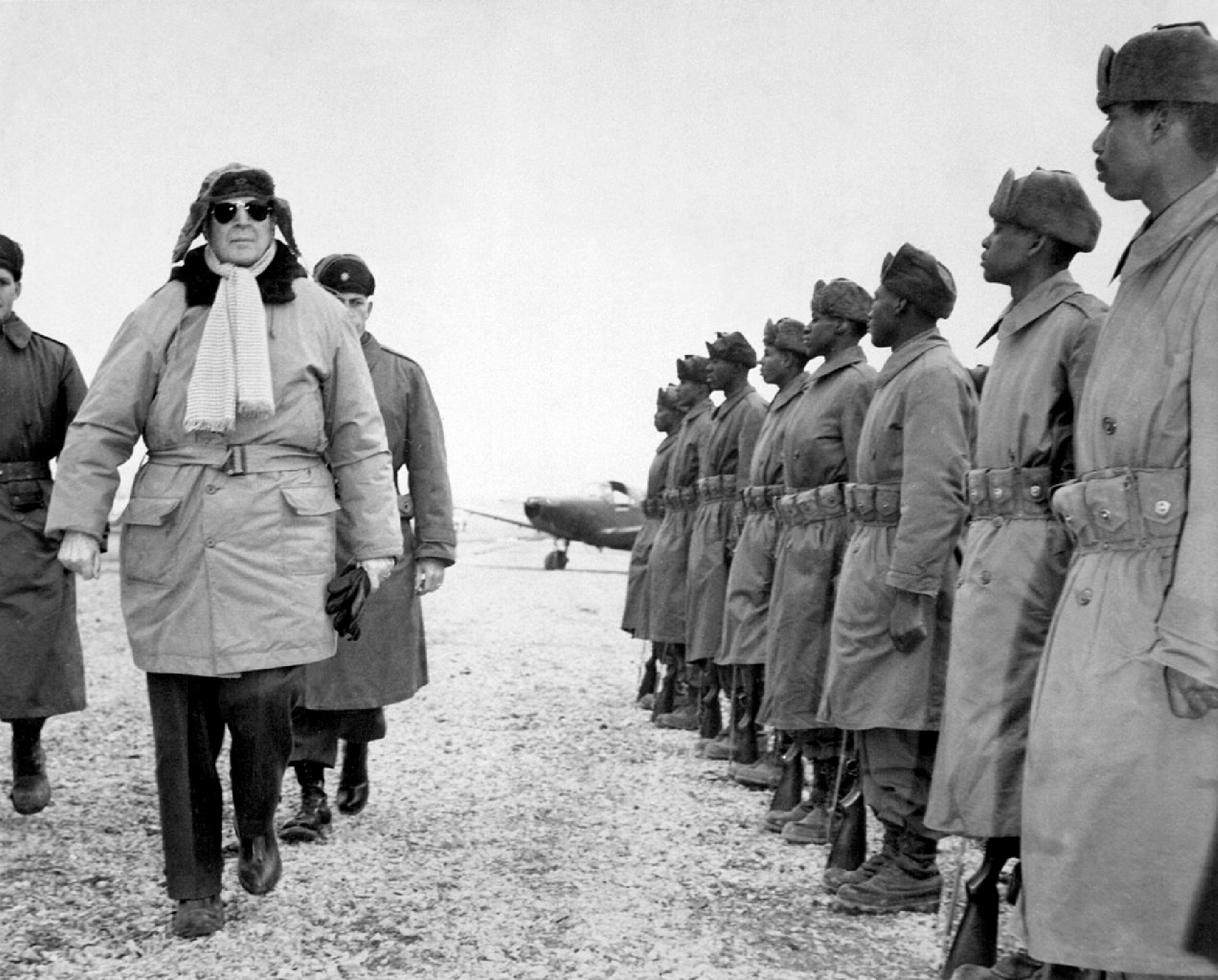
Myth/Misconception: More Than MacArthur – U.S. Intelligence Failures in Korea
The narrative that General Douglas MacArthur’s strategic genius won the war in the Pacific against Japan – beating overwhelming odds – remained potent after that conflict. So when President Truman directed him to lead U.S. forces to drive out the North Korean invaders, MacArthur was eager to prove it again: planning for the dramatic amphibious assault at Inchon which proved to be a stunning success.
MacArthur moved quickly from Inchon to complete the destruction of North Korean military units and unify the Korean peninsula, rejecting all intelligence indicating a significant Chinese intervention. His reckless race to the border left his command vulnerable to a massive surprise attack by Chinese “volunteers” which drove United Nations forces back below the 38th Parallel.
MacArthur’s flawed strategy is one of the main lessons that Americans have taken from the Korean War. But it represents only a small part of the story. There were other serious U.S. intelligence failures in Korea – before and after autumn 1950.
In August of that year, the president nominated Lieutenant General Walter Bedell Smith as Director of Central Intelligence (DCI). His assignment was to reform an overall intelligence community that had given no warning of a potential North Korean invasion, nor anticipated several previous international crises. Smith devoted two months to learning what problems he would face as both the head of CIA and the leader of the intelligence community. He concluded that one of his most immediate challenges was to gain control of a rapidly expanding range of paramilitary activities and other covert operations.
John Limond Hart concluded that “nearly every Korean agent he had inherited had either invented his reports or worked in secret for the communists..."
In Korea, the U.S. Army had launched a range of covert operations including sabotage, paramilitary attacks, and collection of intelligence on enemy movements. As commander of the Far East region, MacArthur had forbidden the CIA to function in his area. In January 1951, Smith flew to Tokyo and used the surprise Chinese intervention to persuade the imperious general to accept CIA activities in Korea. Training bases were quickly created, and large numbers of Korean agents recruited.
For Smith, gaining control of covert operations now involved two separate but related problems. The Joint Chiefs of Staff pressed hard to win authority over all covert operations in the combat zone. After a long bureaucratic battle, the NSC decided in October 1951 that the CIA would control all covert operations in Korea, but the military would provide the funds, equipment, and personnel for these operations under CIA direction. Army personnel were to be involved in the recruitment, training, and operations of these agents, and they had a role in making initial mission reports.
The DCI’s second problem was the zealous work of Frank Wisner, an OSS veteran who since 1948 had been in charge of covert operations at the CIA’s Office of Policy Coordination. His principal activity had been operations in Eastern Europe and the Soviet Union. By early 1951, “Wisner’s operations had multiplied fivefold since the start of the war,” asserts Tim Weiner in his book, Legacy of Ashes. He “was hiring hundreds of college kids every month, running them through a few weeks of commando school, sending them overseas for half a year, rotating them out, and sending more raw recruits to replace them.” Wisner moved quickly to take advantage of the opportunity to function in Korea. One of his recruits was Donald Gregg, who would later serve as U.S. ambassador to South Korea. He later reflected – as reported by Weiner – that he “took tough Korean farm boys plucked from refugee camps, brave but undisciplined men who spoke no English, and tried to turn them into instant American intelligence agents. … It was swashbuckling of the worst kind." We would drop them into North Korea on poorly conceived missions, “and we’d never hear from them again.”

The results of these amateurish policies only got worse. During the spring and summer of 1952, Albert Haney, CIA station chief in Seoul, sent over 1,500 Korean agents into North Korea. His replacement, John Limond Hart, was suspicious of Haney’s highly positive reports to Washington. He investigated and found that Haney had used 200 American agents, none of whom spoke Korean, to recruit and manage the recruits. These agents had hired South Korean contractors to do their work. In his book, The CIA’s Russians, Hart concluded that “nearly every Korean agent he had inherited had either invented his reports or worked in secret for the communists. Every dispatch the station had sent to CIA headquarters from the front for the past eighteen months was a calculated deception.”
The full story of the CIA’s disastrous covert operations in Korea may never be known. The records of many subsequent reviews and investigations have been destroyed or covered up. After the war, Colonel James G.L. Kellis wrote a personal letter to President Dwight Eisenhower disclosing how this fiasco in Seoul had been covered up by the CIA and misrepresented in testimony before Congress by Allen Dulles, Wisner’s boss during the war and then CIA director. Kellis, who had served as Wisner’s director of paramilitary operations, wrote that before his testimony Dulles had been alerted that the “’CIA’s guerrillas’ in North Korea were under the control of the enemy.” Tim Weiner concludes: “The inability to penetrate North Korea remains the longest-running intelligence failure in the CIA’s history.”
Samuel F. Wells Jr. is a Cold War Fellow in the History and Public Policy Program at the Woodrow Wilson International Center for Scholars, where he founded the International Security Studies Program and served as associate director and deputy director. His publications include The Strategic Triangle: France, Germany, and the United States in the Shaping of the New Europe (2006), and his latest book, Fearing the Worst: How Korea Transformed the Cold War (2019).
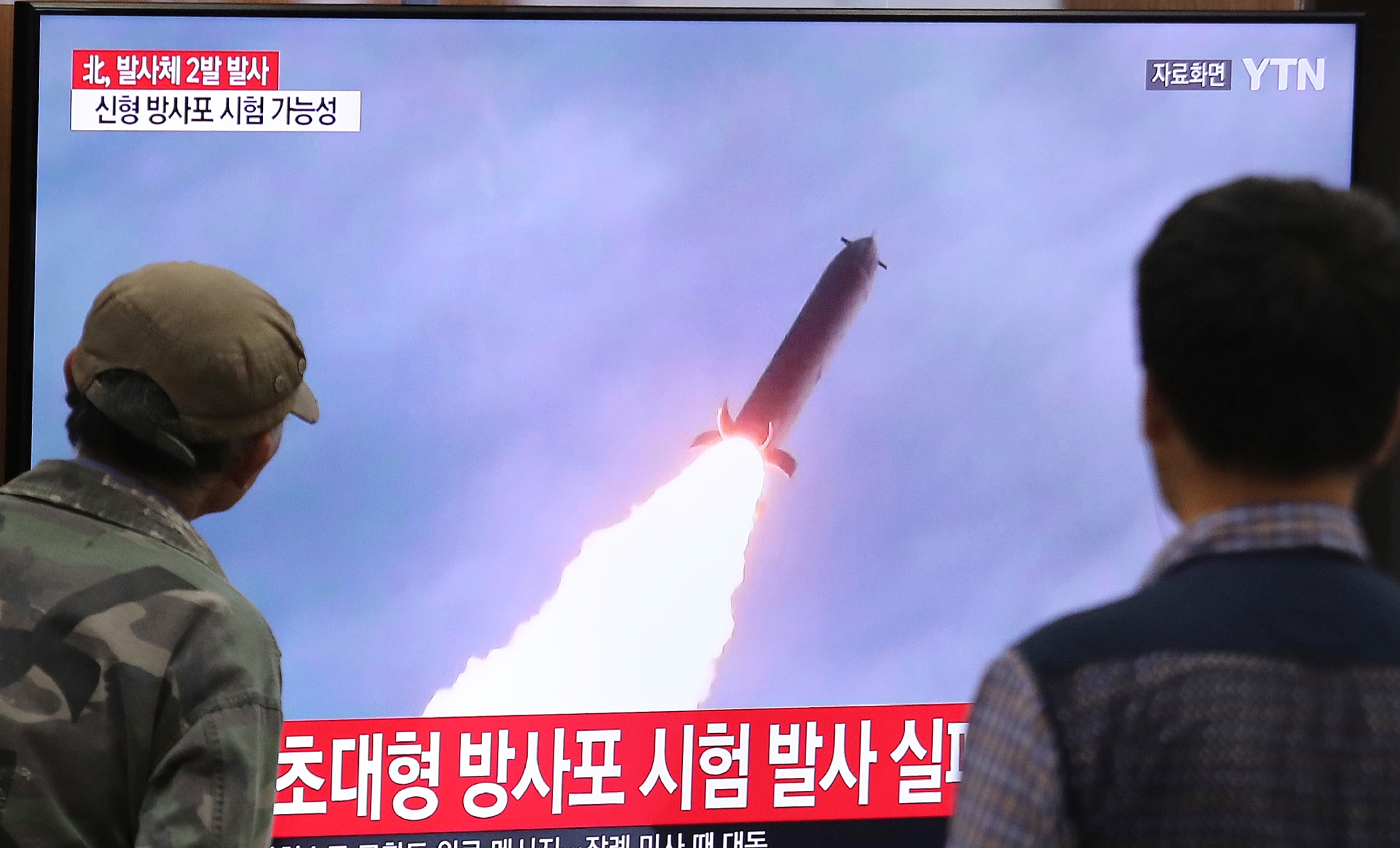
Myth/Misconception: North Korea is a Crazy State (with Nuclear Weapons)
Seventy years after the start of the Korean War, North Korea is close to acquiring the game-changing capability to target the U.S. homeland with a nuclear weapon. Should war again break out on the Korean peninsula, the threat is real. The North became a nuclear weapon state in 2006, and in the subsequent years, it not only has developed and tested an intercontinental ballistic missile, but also (per U.S. intelligence) mastered the ability to miniaturize a warhead to fit atop it.
The vulnerability of the United States to nuclear attack is the precipitant of the current crisis with North Korea. In 2017, President Trump tweeted, “It won't happen,” and called North Korean dictator Kim Jong Un “a madman.”
President Trump also characterized North Korea as a “rogue” state – a unilateral American political term, without standing in international law, that entered the U.S. foreign policy lexicon after the Cold War. The policy lumped a disparate group of adversarial states – the Kim family’s North Korea, as well as Saddam’s Iraq, Qaddafi’s Libya, and the Ayatollahs’ Iran – whose regimes pursued weapons of mass destruction and supported terrorism.
The “rogue” designation has carried an important connotation—that these are essentially crazy states. As during the lead up to the Iraq War in 2003, the imputation of irrationality has been central to the argument for preventive military action to deny “rogue” regimes nuclear weapons. In 2017, when North Korea was conducting nuclear and long-range missile tests and Washington and Pyongyang were trading threats (such as Trump’s “fire and fury” tweet), then National Security Advisor H.R. McMaster asserted that “classical deterrence theory” does not “apply to a regime like the regime in North Korea.”
Yet North Korea’s leadership is not irrational. Its policies, which include the strategic use of brinkmanship, are based on an inner logic whose paramount interest is regime survival.
President Trump has characterized North Korea as a “rogue” state – a unilateral American political term, without standing in international law, that entered the U.S. foreign policy lexicon after the Cold War.
Though North Korea is not a crazy state, it is not an ordinary country. The North’s estimated GDP of $40 billion is dwarfed by South Korea’s $1.7 trillion. The country’s estimated caloric intake per capita of 2100 calories a day is below the 2500 recommended by the United Nations. The consequences are startling: the average five-year-old boy in North Korea is now nine centimeters shorter than his counterpart in the South.
North Korea’s long-running economic crisis has played out against the backdrop of two changes of leadership – Kim Il-sung, the founder of the North Korea state, to his son, Kim Jong Il, in 1994, and then to his grandson, Kim Jong-un, in 2011. North Korea’s dynastic rule is essentially a family cult. And yet North Korea – by many socio-economic indicators a failed state – is on a possible trajectory by the early 2020s to acquire a nuclear stockpile one-half the size of Britain’s or France’s arsenal!
In March 2018, then-CIA Director Michael Pompeo asserted that “the thing that is most dangerous” about North Korea’s advancing nuclear and missile capabilities is “the character who holds the control over them today.” The surprise Singapore summit between President Trump and “Dear Leader” Kim Jong-un in June 2018 changed the psychology of the nuclear crisis with North Korea. The initiation of a diplomatic track pushed off consideration of a U.S. military option. Kim Jong-un was now Trump’s partner in diplomacy, not the “madman” of his tweets.
Though the summit meeting yielded a joint statement in which the Kim regime pledged its commitment to “denuclearization of the Korean peninsula,” North Korea and the United States have contending definitions of denuclearization. For Pyongyang, denuclearization would essentially require the end of the U.S. nuclear umbrella for South Korea and Japan, as well as the end of the bilateral security agreement between Washington and Seoul. For Washington, it entails the transformational goal of “CVID—complete, verifiable, irreversible denuclearization” of North Korea. But after the U.S-led wars of regime change in Iraq in 2003 and Libya in 2011, zero nuclear warheads will simply not be on the table as long as the Kim family rules in Pyongyang.

As CIA Director Gina Haspel has observed, North Korea values its nuclear deterrent “as essential to … regime survival.” For North Korea, the war did not end in 1953. In addition to its deterrent function, the nuclear program is also the North’s sole essential bargaining chip—an asset to monetize through negotiations with the United States and South Korea.
After three summit meetings, long on ceremony and short on substance, nuclear diplomacy is stalled. If it can be revived, which it should as a matter of urgency, a key goal would go beyond North’s current moratorium on nuclear and long-range missile testing to achieve a more fundamental goal—the verified cessation of the production of weapons-usable fissile materials to cap the current arsenal, thereby preventing a bad situation from getting worse.
The price for such an agreement would be significant U.S. sanctions relief. The U.S. narrative would be that a freeze agreement is an incremental step toward the aspirational goal of denuclearization.
A former senior U.S. official once quipped: problems have solutions; dilemmas have horns. North Korea’s nuclear challenge poses a dilemma because it is embedded in the broader question of the North’s societal evolution. For the United States, managing this tension (as it works toward a negotiated freeze of North Korea’s program) will require Washington to decouple the nuclear issue from the question of regime change and rely on internal forces as the agent of societal change.
Robert S. Litwak is Senior Vice President and Director of International Security Studies at the Wilson Center. He is the author of Nuclear Crises with North Korea and Iran: From Transformational to Transactional Diplomacy.

Myth: A Sino-North Korean Blood Alliance?
China’s intervention in the Korean War on October 19, 1950, saved Kim Il Sung’s regime. Yet it also has become a symbol of what has come to be called a Sino-North Korean blood alliance.
New research on the motivation and rationale behind China’s strategic decisions substantially weaken this argument. During the Korean War, Beijing and Pyongyang clashed over both China’s intervention and armistice negotiation, with both parties always prioritizing their own interests.
Before and after the founding of the People’s Republic of China (PRC) in October 1949, Mao Zedong ardently opposed Kim’s desire to unify the Korean Peninsula by force. His reasoning was that the withdrawal of U.S. troops from South Korea in June 1949 removed a security threat from the Korean Peninsula. An invasion would bring U.S. or Japanese forces back to a historic gateway for invasions of Northeast China.
Rapid intervention of the U.S after June 25, 1950 and its announcement of the deployment of the 7th Fleet to the Taiwan Straits seriously threatened the political foundations of the newly established PRC regime. Rumors that there would be a “regime change (Biantian Sixiang),” specifically the downfall of the Chinese Communist Party (CCP) regime and the reinstatement of Chiang Kai-shek, became widespread. There was also a strong feeling that China couldn’t hold a candle to the U.S. militarily.
In these circumstances, Mao sought a rapid North Korean victory. On July 2, 1950, he made early intervention by Chinese troops – even without the support of Soviet air cover – a condition for China’s entry into the war. Stalin took a negative position on the matter, however, and Mao did not get his wish.
After the UN’s successful Inchon Landing on September 15, 1950, Mao informed Stalin and Kim Il Sung that China would not send troops. But by October 5, pressure from Stalin and the promises of direct Soviet involvement led Mao to change his mind. Yet Stalin reneged on his promises in an October 11 meeting with Zhou Enlai. Soviet air power would not come for “at least two or two and a half months,” – and would not “participate jointly in the ground operations of Chinese forces.” Even tanks and artillery offered by Stalin could not be used for six months.
During the Korean War, Beijing and Pyongyang clashed over both China’s intervention and armistice negotiation, with both parties always prioritizing their own interests.
Predictably, Mao informed Stalin the next day that China would halt the implementation of its plan to enter Korea. Yet a CCP Politburo meeting the very next day reversed this decision. Why? Fraternal feelings for North Korea?
Hardly. Mao explained that the possibility of securing the northern part of North Korea without fighting with the U.S forces was the deciding factor: “The U.S. and its puppet troops, concerned [by the intervention of China], would stop their advance northward and, thus, we would be able to protect the areas north of the Pyongyang-Wonsan front.” He added that “we could extend China’s defensive line from the Yalu River to the Tokchon-Yongwon line…and it will be very beneficial to us as well.” The concept of a blood alliance was absent from the beginning.
Armistice negotiations – and continuation of the war – created more significant disagreement between Mao and Kim.
With the failure of the Fifth Campaign on May 21, 1951, Mao proposed to wage guerilla warfare against the UN forces from the 38th parallel to the Pyongyang-Wonsan line, but Stalin insisted on strengthening a defensive line along the 38th parallel. Worse still, Peng Dehuai, commander-in-chief of the People’s Volunteer Army, expressed reservations about defending the Pyongyang-Wonsan line.
As securing a victory against UN forces became virtually impossible and risks for utter defeat grew, Mao decided to pursue an armistice negotiation on May 30. Only then did Mao inform Kim, who came to Beijing to discuss future military actions. And after negotiations began on July 10, Mao steadily pressured Kim to offer concessions. All main issues, except prisoners of war, were agreed in late November.
As peace loomed, Mao shifted attention to economic development. In February 1952, Mao began to draft the “First Five-Year Plan” to launch on January 1, 1953. He also requested Soviet aid for it. To Mao’s dismay, Stalin remained silent.
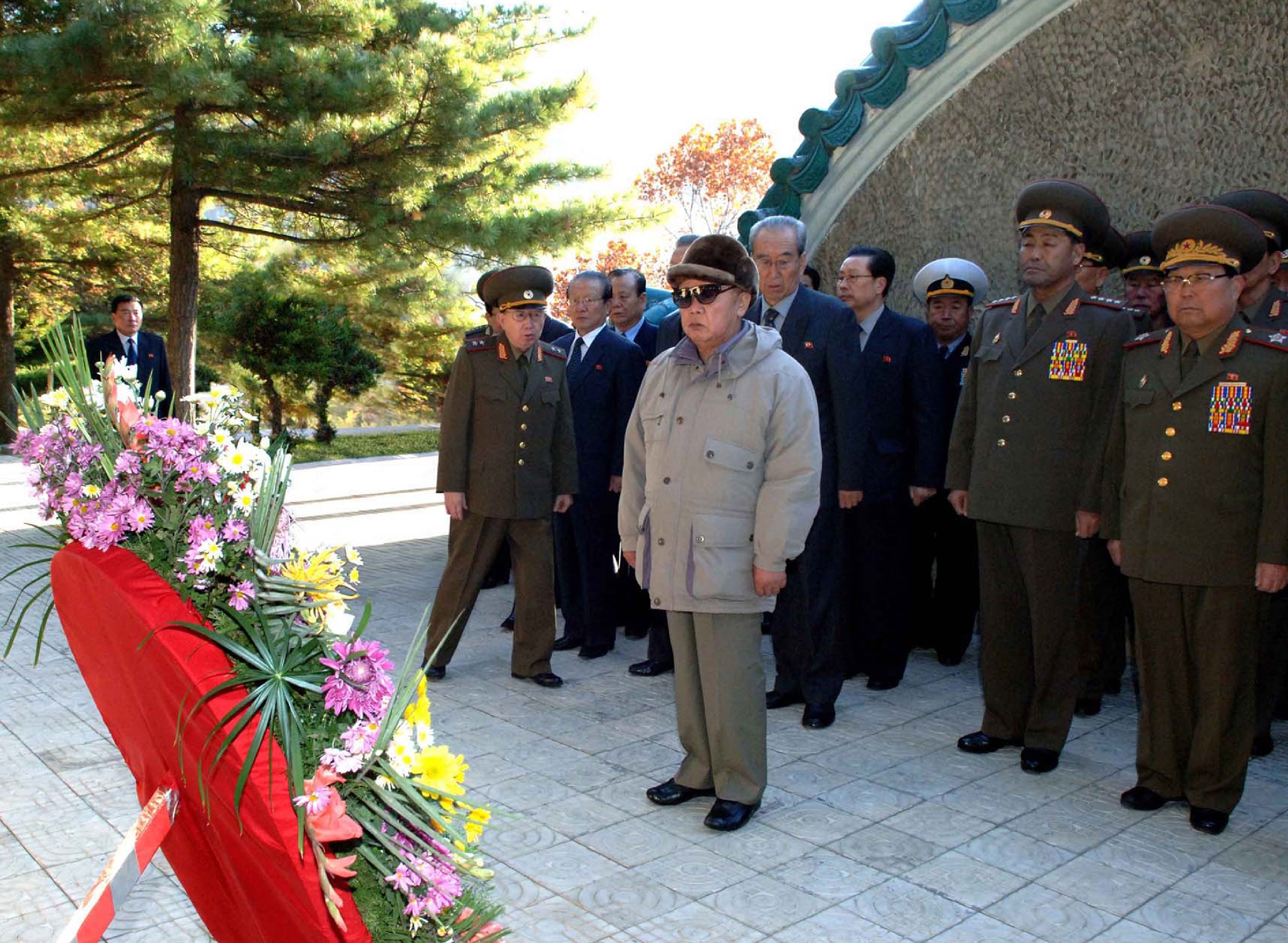
Others were punished for Mao’s ambitions and Stalin’s obduracy. Mao understood that Stalin was determined to continue the conflict in order to bind America’s hands and feet in Asia. So on April 22, Mao demanded negotiators take a hardline stance on the last issue to protract the talks for few months.
Yet the North had been badly damaged in the war, and Kim Il Sung wanted to accept U.S. conditions and end the conflict quickly. But Mao insisted that China and North Korea must continue the war. His change in attitude was, of course, well-received by Stalin, who subsequently promised massive aid for Chinese economic development. The unsettled issue of prisoners of war was simply a pretext for Mao to continue the war against the wishes of his ally.
For the most part, Mao’s key strategic decisions during the war gravely damaged North Korea’s interests. China’s decisions aimed to maximize its own position, and the ties of brotherhood or sympathy toward North Korea did not play a significant role. When ideology collided with national interests, Mao usually prioritized the latter. The evidence confirms that the widely-accepted concept of Sino-North Korean blood alliance is certainly a myth.
Donggil Kim is a Professor of History at Peking University, where he is also the Director of Center for Korean Peninsula Studies. He has published 30 articles in journals including Diplomatic History and Cold War History, and is presently at work on a project on the Sino-Korea Cold War.
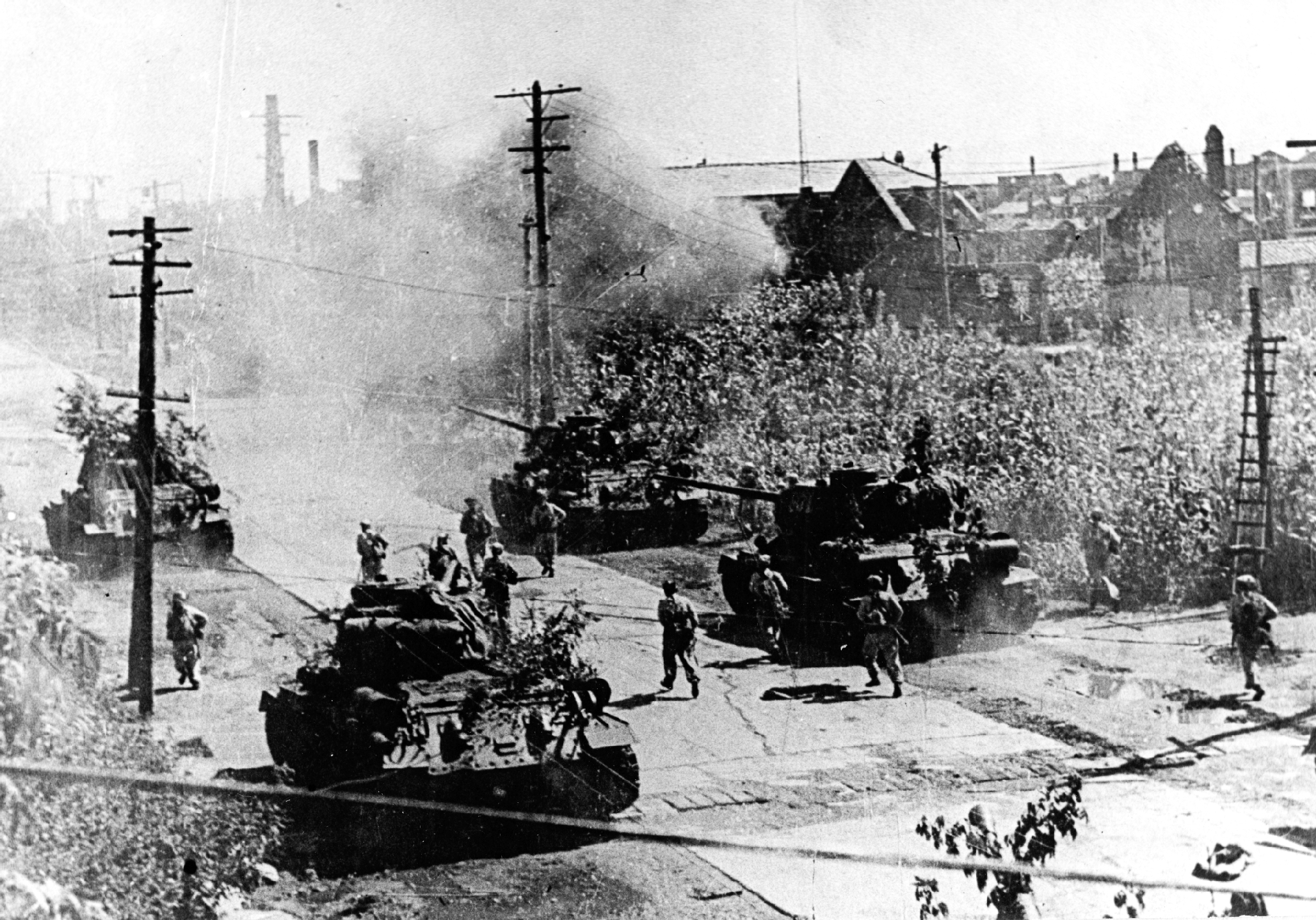
Myths: The Invasion Was a Shock / North Korean Troops Were Ideologues
It has been 70 years since the beginning of the Korean War. Perhaps it is still a “forgotten war,” but the two Koreas have become the center of world attention, albeit for different reasons.
The Republic of Korea, aka South Korea, is regarded as a mecca of 21st Century popular culture. The world has embraced K-Pop, K-Movie (including Academy Award winner Parasite), K-soap opera, Samsung mobile phones, Hyundai cars and K-test kits for coronavirus.
The Democratic People's Republic of Korea, aka North Korea, is called the “Hermit Kingdom.” It is known for its nuclear weapons, human right abuses and its young leader, Kim Jong Un.
Korea was divided into South and North in 1948. This partition set in motion what we know as the Korean War – one of the most tragic conflicts in the history of the peninsula. Korean War historiography developed as a part of the Cold War historiography. It has traditionalists, revisionists and post-revisionists. The opening of primary sources in China and Russia since the early 1990's has helped create new studies on the Korean War, introducing new aspects of the conflict. It has also helped us see uniquely Korean aspects of the war that go beyond viewing it merely as a proxy war between superpowers.
What common misconceptions of the Korean War still linger? Let me dispel two key myths.
First, we remember 2020 as the 70th anniversary of the Korean War.
But the conflict did not start on June 25, 1950. And the invasion that is being remembered this year did not come as a shock to Koreans.
The typical narrative of the Korean War is that shelling by the Korean People's Army (KPA)'s field artillery on that day 70 years ago was a tactical move that surprised the Korean people. This is wrong. The invasion made the Korean people feel not shock, but desperation. It was the misery of knowing that conventional war had finally arrived.
Historians such as Allan Millett define the Korean War in three stages: a first war was from 1948 to June 25, 1950; a second war was from June 25, 1950 until the intervention of Chinese Volunteer Forces in late 1950; and a third war from that intervention to the armistice on July, 1953. Historian Bruce Cumings' excellent insight about the trajectory of the conflict is key: the Korean Peninsula was already in a state of war long before June 25, 1950, and battling internal problems including pro-Japanese collaboration, land reform and other issues.
The conflict did not start on June 25, 1950. And the invasion that is being remembered this year did not come as a shock to Koreans.
To extend this point further: The Korean people had already suffered many casualties and conflicts for two years before June 25, 1950. Hundreds of thousands of Koreans lost their lives in diverse conflicts after the 1948 partition, including the Yeosu-Suncheon Rebellion in October 1948, the Jeju uprisings in 1948 and 1949, and numerous conflicts near the 38th Parallel.
Survivors remember the Yeosu-Suncheon rebellion as a greater nightmare than the Korean War itself. More than three thousand people, including young children, died in it. Sixty thousand people, including more young children, died during the Jeju uprisings. Neither one of these events was conflict on a small scale. Nor did they have a smaller death toll than many battles in the Korean War. So the KPA invasion in June 1950 was no surprise. Not in the least.
The second myth is about North Koreans. Films, novels and newspapers are filled with images of the KPA as ideological robots – armed with weapons from the Soviet Union and brainwashed by Kim Il Sung's dictatorship and Marxism.
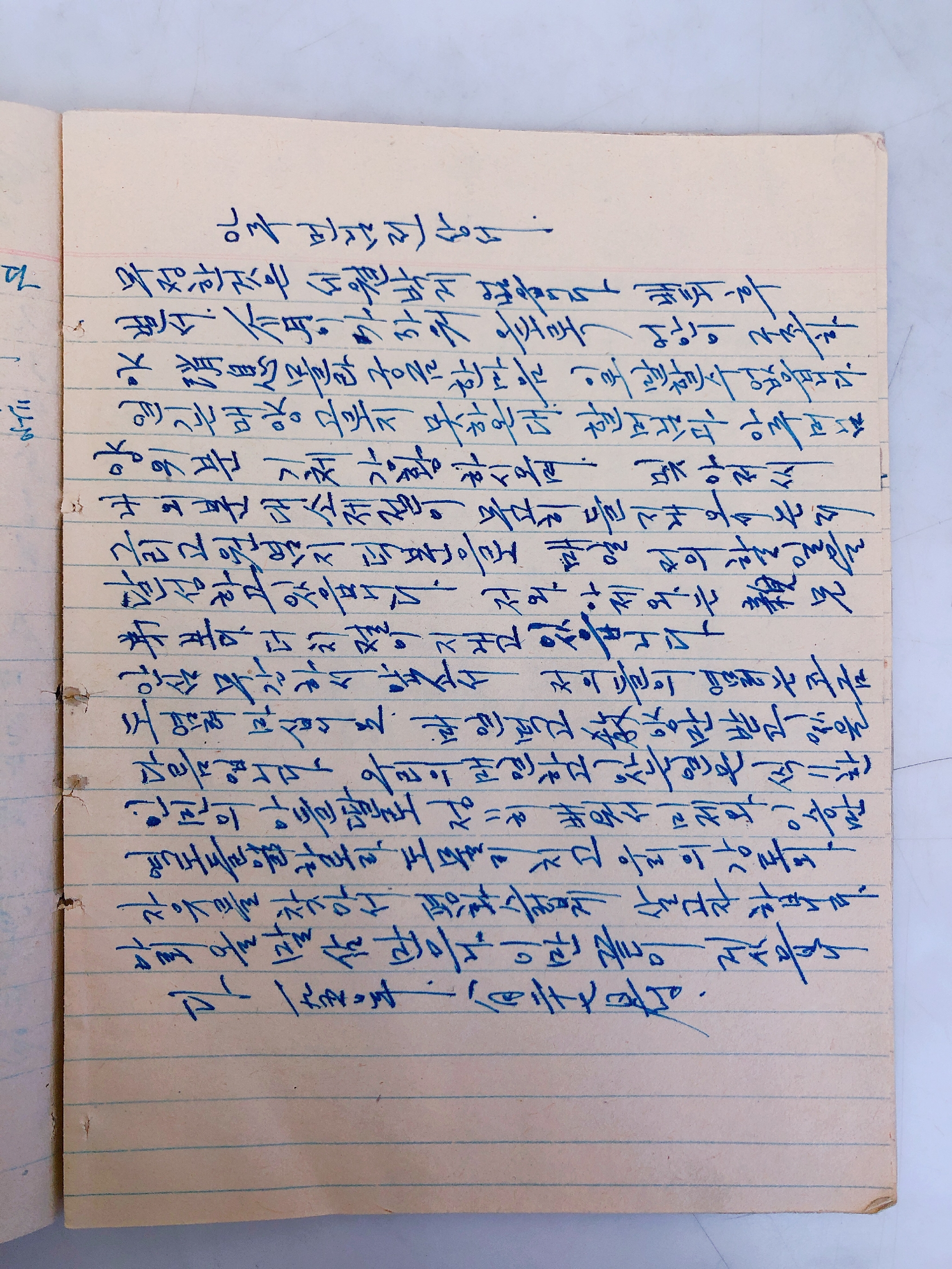
Again, this is a serious misconception. It is true that most of commanders' positions in the KPA were filled by veterans of the Korean Volunteer Army – soldiers with firm ideological beliefs who had fought with Mao's Army against the Chinese Nationalists in China. These high-ranking officers had rich experiences before they entered the KPA, where they developed ambitions and made political connections.
But most of the KPA was comprised of young Korean recruits. They were ordinary sons of poor peasant families who wanted middle class jobs. How do we know? You can find their letters to their parents, and application forms, including their family and education background and personnel notes in National Archives Record Group 242 in the U.S. National Archives.
The U.S. Army captured these documents and sent them to Washington DC when they advanced north to Pyongyang and beyond. These primary sources are a window into the personal stories and backgrounds of young KPA soldiers. What did they want from their lives? What were their dreams? Marxism and Leninism were new to them, and they did not care about ideology. These ordinary young soldiers regarded the KPA as a job to feed their families.
The Korean War is not ended. The Korean Peninsula is the final stage of the Cold War. Recent denuclearization talks are significant because they give a voice to forgotten ordinary victims. They reveal people as human beings, outside the politicization of history. Unfortunately, Cold War rhetoric still dominates in films, novels, scholarship and media about the Korean War. It is time to focus on the stories of human beings, without using an ideological lens.
Youngjun Kim is a Professor at the National Security College at the Korea National Defense University. He is the author of Origins of the North Korean Garrison State: People's Army and the Korean War (London: Routledge, 2017), and a member of the National Security Advisory Board for the President's Office (Blue House) of the Republic of Korea.
(Cover photograph: A banner in a Seoul exhibition hall depicts Mao Zedong, Kim Il Sung and Joseph Stalin. AP Photo/Lee Jin-man)
